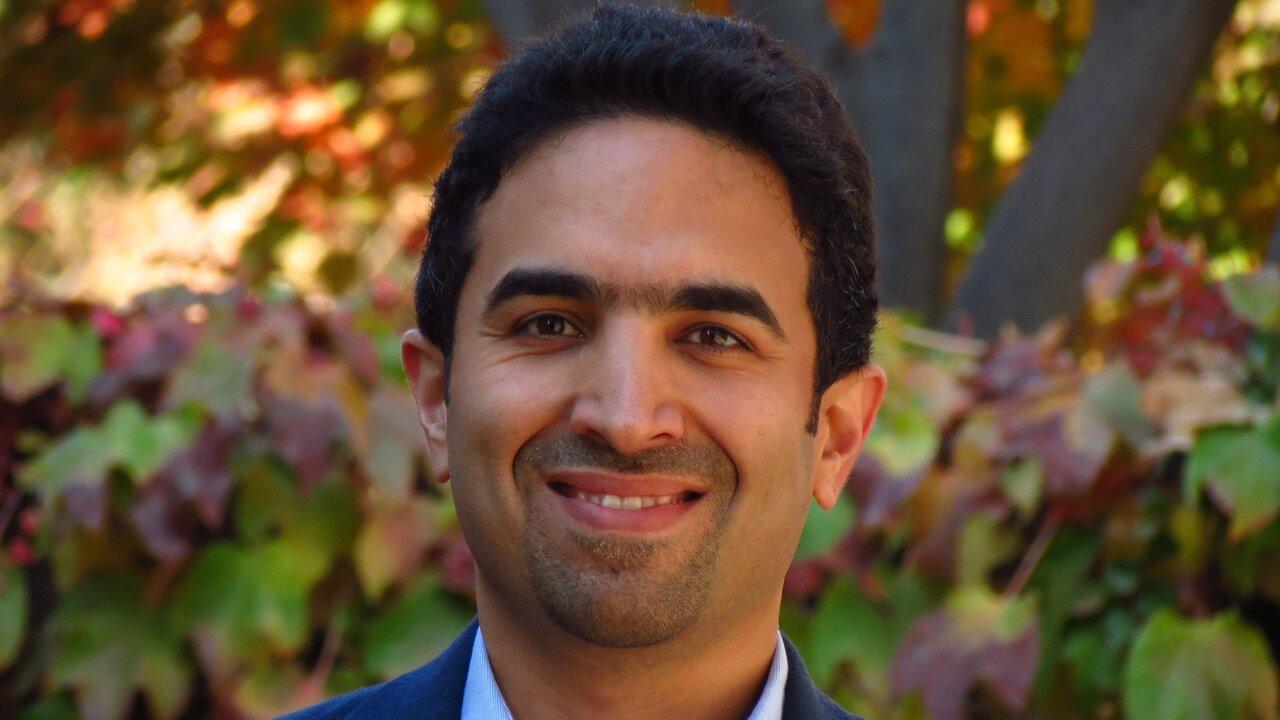
Iman Soltani: Automation Renaissance Man
For mechanical and aerospace engineering (MAE) assistant professor Iman Soltani, automation is vital to the present and a key to the future. With experience automating everything from microscopes to assembly lines and vehicles and a desire to collaborate across campus, Soltani plans to help make UC Davis a leader in the field as the world becomes more automated.
Though automation is important, Soltani feels the field is largely misunderstood.
“Automation is usually equaled to robotics, but it’s so much more than that,” he said. “It is such a powerful field because you can develop new techniques for a wide variety of applications, and I think it’s going to become more and more important in the future.”
The future he works toward is one where machines work side-by side with humans to accomplish tasks. Some tasks, such as connecting wires in an assembly line, are too difficult to automate and others, such as operating atomic force microscope, require a level of precision that humans are not capable of.
“The picture that usually comes to people’s minds when you tell them about car manufacturing companies and automation is a line filled with robots working together and assembling all the parts and then the car coming out on the other end of the line, but this could not be further from the reality, as the majority of activities on the production lines are still manual” he said.
Soltani describes his research as “automation across the scales.” His past work has ranged from designing high-speed large-range atomic force microscopy, monitoring oil quality in jet engines, automating industrial assembly and controlling self-driving cars. He feels the underlying concepts are largely the same despite the differences in how they’re applied.
Human-inspired machines
Soltani focuses on naturalistic automation, which means looking to humans to understand the optimal forms of automation.
“We need to look at the problem in a different fashion and see how humans deal with assembly or driving tasks,” he said. “Rather than measuring everything very accurately [and programming it], we want to get inspiration from the way humans operate and try to implement that on our algorithms.”
Part of this is combining control, mechanical engineering and AI-powered automation techniques into a single system to make it function like a human with a brain and arms. On assembly lines, for example, the “brain,” or AI system, will identify parts and the best ways to fit them together. The system uses control theory hand-in-hand with mechanical dynamics to smoothly and reliably operate the robot “arms” for successful assembly
Soltani is also interested in few-shot learning, where the algorithm is trained on a handful of training examples. When told “turn left at the gas station,” for example, humans can imagine what a gas station looks like in the daytime, at night and when it’s raining just from that one piece of information. This doesn’t come naturally to a machine—which sometimes needs thousands of example images under various conditions to be trained—so this is a problem Soltani hopes to help solve.
“I’m very interested in designing controllers that behave like humans,” he said. “For example, rather than treating driving as an automation problem the way it is conventionally done where everything is measured and controlled very accurately, in this approach, actions such as turning right or keeping straight do not require the GPS coordinates of every point that we want to be in ahead of time.”
Excitement to collaborate
Soltani became interested in automation through robotics while earning his M.S. in mechanical engineering at the University of Ottawa in Canada and continued his work while earning his Ph.D. at Massachusetts Institute of Technology (MIT). He has spent the past few years working on automation for assembly lines and self-driving cars as part of Ford Motor Company’s Greenfield Labs in Palo Alto.
Soltani officially joined the MAE department on July 1, but his relationship with UC Davis began long before. He forged research partnerships with the department at Ford and was eventually invited to serve on the MAE external advisory board before joining the faculty.
At UC Davis, he plans to pursue his interests in manufacturing automation, industrial diagnosis and self-driving vehicles while expanding his work to new areas through collaborations with the UC Davis School of Medicine, the Institute of Transportation Studies and the Center for Data Science and Artificial Intelligence Research, as well as the MAE department’s Advanced Highway Maintenance and Construction Technology Center (AHMCT).
“UC Davis makes it easy to start new collaborations, so I’m very excited to start up my lab,” he said.
